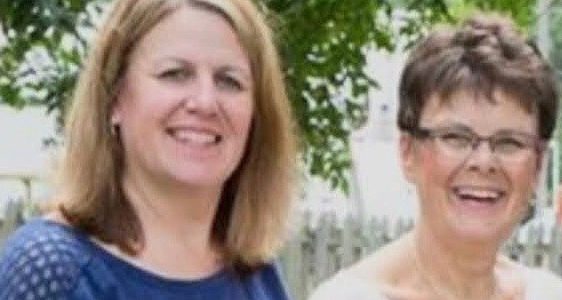
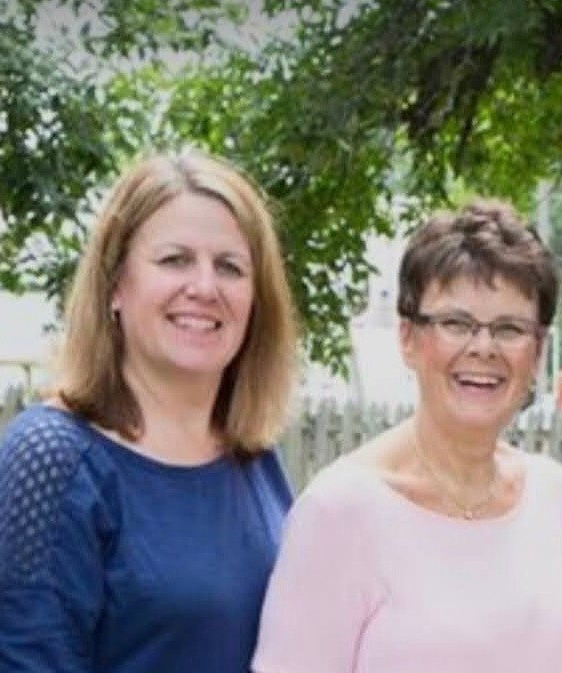
It’s that time of the year again. You’ve probably been watching the Final Four basketball game and munching your way through a couple of boxes of Girl Scout Thin Mints or Samoas. April is also National Deaf History Month. What do the two have in common? Most people don’t realize it, but Juliette Gordon-Low, who founded the Girls Scouts in 1912, was deaf.
Gordon-Low had become partially deaf when she was in her 20s due to chronic ear infections and an accident. On her wedding day, a grain of rice became lodged in her other ear and she became deaf in both ears.
Gordon-Low lived the life of an atypical southern belle. She moved to England with her husband, met Queen Victoria, usually could be found with an exotic bird perched on her shoulder, and was known for standing on her head at Girl Scout headquarters to show off the new Girl Scout uniform shoes. In other words she did it her way .Deafness was not even a contender.
Ginger Leon (née Smith), whose parents are Jackie and the late George Smith of MIlbank, is another tough cookie, who also happens to be deaf. Jackie describes Ginger as stubborn and Independent. “Definitely does it her way. She’s been comfortable with her deafness from the get-go.” Jackie says, “Hundreds of times, Ginger has said, ‘This is the way God intended me to be and I’m not arguing with him. I’m perfectly happy to be who I am. I can do everything except hear.’”
In high school, Ginger was active in basketball and track. She was a cheerleader, the Homecoming queen, and valedictorian of her class. She earned her undergraduate degree at Gallaudet College, her masters at Boston University, and taught at an inner city school and the University of North Carolina. She has been married for over 25 years and is mother to two grown boys. She lives in Greensboro and teaches sign language at Central Piedmont Community College in Charlotte, North Carolina.
Jackie recalls when Ginger was a senior in high school, “We entered her in the Snow Queen contest in Milbank. We thought it would be a good experience. When it was time for her interview, I sent her sister Pam in with her. When Pam came out she said, “They asked her if she could have anything in the world, what would it be? Pam expected her to say, ‘to be able to hear,’ but Ginger’s answer was, ‘I’d like to go to Hawaii.’ Later, Ginger explained, ‘Why would I ask for something I’m fine with?’” “Like I said she’s very, very, comfortable with it,” Jackie says.
In the beginning, though, things were not quite so cut and dried. Ginger was born October 15, 1964, and although she was born deaf, it was not until she was almost one and a half years old when her family learned she was deaf. Jackie recalls, “We lived in Hudson at the time. That was George’s first superintendent position. I hadn’t really told anybody that I was expecting another baby. My daughters Kim and Pam had gone across the street to play with the neighbor kids. When I picked them up, the neighbor mom said, ‘Oh, I need to tell you that Brian has the German measles.’”
“So, I went to the doctor right away and got a gamma globulin shot, which was supposed to take care of it. I didn’t think I ever got the measles, and when Ginger was born, we weren’t concerned because I had received the injection.
Ginger fooled us, too. She compensated for not talking by imitating everybody. She usually followed Kim and Pam. She also would bring her musical toys to us to wind them up. Later, we learned it wasn’t the sound she wanted, but the vibration.
I think that’s part of the reason we didn’t realize sooner she was deaf. She always interacted with the family. And Ginger was very content. A very, very, happy baby.”
“Looking back, there were probably signs we missed. People ask me, didn’t you notice she didn’t wake up when there was noise in the house? But, when I brought my babies home, I’d put them beside a TV or a radio because I was not the kind of mother who told everyone to be quiet because the baby was asleep. I took my babies to ball games because George was a basketball and football coach, and they all slept right through them. So that wasn’t a clue. She cried, but was very content and fit right in.”
“When she was about a year old, I remember going into her room. She was in her crib and her back was to me. She didn’t respond at all.That was when I first wondered if she didn’t hear me. So, I made an appointment with the only doctor in Hudson.” However, he was an osteopath, and dealt mainly with the musculoskeletal system.
Jackie says, “He sat Ginger up on a table and told me to stand in front of her. Then, he went behind her and slapped two books together. Because she turned around to look at him, he said, ‘Oh, she’s fine. You mothers, you just worry all the time.’ Naturally, we believed him.”
“Then, on the 4th of July, the kids were outside and our son Scott lit a firecracker. It landed right behind Ginger, and she didn’t move. We decided something must be going on, and I made an appointment with the ear, nose, and throat doctor in Sioux Falls.
The doctor had no bedside manner. He asked about my health history, and I told him I had been exposed to the German measles, but I didn’t think I’d ever had them because I had the shot. He performed a couple of tests and said, ‘Well, she’s deaf. Take her to the School for the Deaf and have an audiologist test her.’ Then, he just dismissed me.”
“Ginger and I got back in the car. I cried the whole way home with Ginger standing beside me – that was before seat belts. She just kept patting me on the back and wiping away my tears, which made me cry harder.”
“At first,” Jackie says, “we worried about all the things she couldn’t do. “Then, as we did more research, we started thinking about all the things she could do. We began to focus on how lucky we were instead of what was missing.”
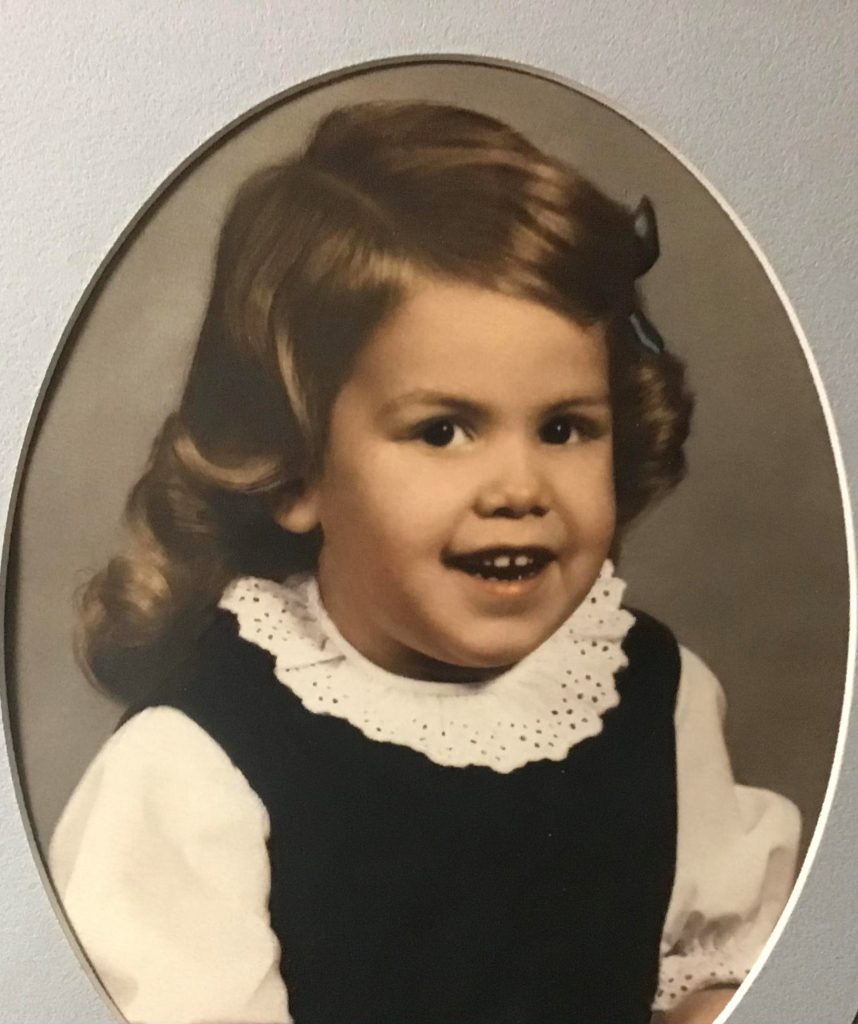
“The audiologist at the School for the Deaf tested her and told us she was profoundly deaf. The deaf culture has categorized itself and defines her as deaf with a capital “D.” They do that so they can communicate better with each other. She has no hearing within the speech range and nothing in the higher ranges. She maybe can hear a drumbeat if the drum is right next to her.”
“George, Ginger, and I went back to the school for a weekend visit when Ginger was three years old. We exposed her to the dormitory and took a lot of photos of her on the playground. We hung them on our refrigerator because at that point we had no skills to communicate with her. Every time we’d look at the pictures, we’d always smile.”
“Not being able to communicate with her was frustrating for all of us, and she seemed to sense we didn’t know how to do it. I remember one time when she was about four, I was baking cookies, and she kept pointing up at the cupboard. I took everything out of the cabinet, but she just kept shaking her head. I wondered, what in the world does she want? I was so frustrated and she was in tears, but she just kept pointing. Finally, I figured out all she wanted to do was help me put the cookies on the cookie sheet. She was so ready to learn, and we didn’t have tools to teach her. That made it a little easier for us to decide she needed to go away to school. It also meant we missed a lot of her childhood.”
“There were few resources available for parents, so I ordered the John Tracy correspondence course. It was developed because the actor Spencer Tracy had a son who was deaf. It suggested sensory training. I used a bag of different-sized blocks and would hold one up and she’d have to dig in the bag and find the matching one. I cut pictures out of magazines, and I would write and print the words like flower or apple. We also did a lot of puzzles. She liked puzzles and was very good at puzzles. We practiced those kinds of things until she went to school.”
“She was not yet five years old when we enrolled her in the School for the Deaf,” Jackie recalls. “The first day of school was coming up, and we all tried to be in a happy mood, but the trip to Sioux Falls was very difficult for me because there was no way to tell her that we would be coming back to get her.”
We went to the dorm and got her settled in her room. It had 14 beds in one big room for girls her age and older. They each were assigned a little twin bed and a dresser. She was allowed to bring only one toy. I packed her a doll, but she never played with it – she was such an outdoor girl. We kissed her, and she went out to play on the swings. Then, we had to drive away. I fell apart. George kept saying, ‘You know it’s the best thing for her.’ I said, ‘My head knows it, but my heart doesn’t.’”
“Her class was also 14 students,” Jackie says.“That was larger than the typical five or six they usually had.They attributed that to rubella.” The School for the Deaf called themselves an oral school, which meant the students learned by lip reading, speech, and mimicking mouth patterns. They didn’t teach them sign language as a class. Now, deaf students are generally mainstreamed. The dormitories at the South Dakota School for the Deaf closed in 2005 and the main campus shut down in 2011.

When Ginger attended, the teachers were mostly hearing and they signed and spoke at the same time. They had Prep One and Prep Two. Prep One was pre-kindergarten because the first year they had to teach them there was a name for everything. “For example,” Jackie says,”there’s no way a deaf person knows this is a table unless somebody tells them it’s a table. Prep Two was more like kindergarten, but they taught them cursive right away; they didn’t teach them to print. When Ginger sent us her first letter, it was in cursive. Deaf people also don’t understand idioms. If you tell a deaf person it’s raining cats and dogs, they’re going to be out looking for cats and dogs.”
“We weren’t allowed to go back to see Ginger at the school for the first two weeks. After the first week, I called and asked how she was doing. The house mother said, I wish they were all like Ginger. When it’s time to go to bed, she sticks her thumb in her mouth and goes to sleep. She never hangs on my legs or cries. Jackie says, ‘In my mind, she was so eager to learn and somehow she was comfortable to be where she needed to be because we couldn’t teach her.”
“At the end of two weeks, we went to Sioux Falls and brought her home for the weekend. She had already picked up some sign language. I thought, okay, now she knows we’re not coming back right away. She’s not going to want to go back. But she got out of the car on Sunday, went running away, and was like, ‘Bye, Mom and Dad…whatever.’
It was a bittersweet moment, but it truly was a relief. The entire time she went to the School for the Deaf, I only remember her crying twice. One of those times she had to be quarantined in the infirmary by herself after she had completely recovered from being sick. She didn’t think that was fair.”
“The School for the Deaf also made her into an even more independent person.The house mother couldn’t do everything for all those kids. So, at five, she had to make her own bed and wash her own hair.”
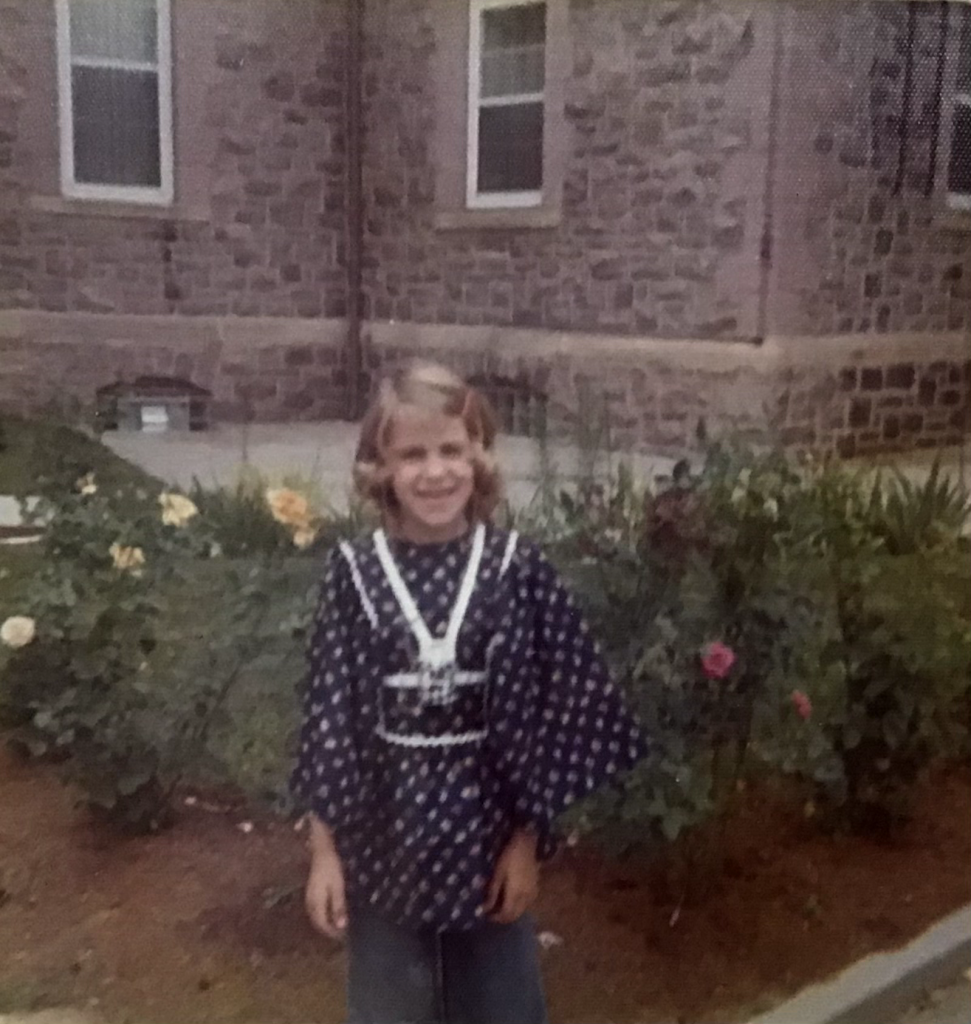
“Generally, I would drive down on Friday to pick her up, and then we would go back on Sunday as a family. Occasionally, we’d buy her a bus ticket. One year at Christmastime, we called the school and said we didn’t think she should come that day because the weather was just absolutely terrible in Milbank. Well, they ended up putting her on the bus anyway, and she got stranded.
We got a call from the Watertown bus station and the guy said, we have a little girl sitting here who says you’re her parents. Ginger had found the phone book and pointed to our name. She was just as calm as could be. It was another example of her independence coming out. I think she was about nine.”
“Another time, she rode home with Janeen Ingber (née Mann) and they got stuck in Brookings in a snowstorm. They ended up staying in Phil Radeke’s dorm room. When she was about 14, she rode with Becky Olsen (née Schad), and they landed in the ditch. A group of guys stopped to help them and tried to push the car out. They put Ginger at the wheel, and the guys kept screaming and hollering and telling her what to do. Finally, one of the boys said, ‘What’s the matter? Are you deaf?’ And Becky turned around and said, ‘Actually, she is.’”
Jackie remembers, “We had to take her away again, this time to college.” She attended Gallaudet in Washington, DC. Gallaudet University is the world’s only university in which all programs and services are specifically designed to accommodate deaf and hard of hearing students. It was founded in 1864 by an Act of Congress, which was signed into law by President Abraham Lincoln. Gallaudet hired their first deaf President in 1988.
Football fans might know Gallaudet has a football team, but they probably can’t name their major contribution to the sport. In the 1920s, Gallaudet’s football team would “huddle” to discuss their next play so the opposing team couldn’t see their signed communications. The practice was adopted by other teams, and today, every team forms a huddle.
At Gallaudet, most of the students are deaf, but hearing people also attend to learn to be interpreters. Ginger earned her degree in computer information systems. Most students also select a foreign language to study as every country has their own sign language. Ginger took French sign language classes. Adding to the difficulty, and much like spoken languages, most sign languages are mutually incomprehensible. It can even occur that the sign languages of countries with the same official language, such as English or Spanish are mutually incomprehensible. This is the case for American Sign Language (ASL) and British Sign Language (BSL).
That, however, did not deter Ginger from traveling across Europe. Her mother says, “It was her dream. Right after she graduated from college, she and one of her deaf friends backpacked through Europe.”
They flew to London and ended up in Greece. “She was gone for two months. It was awful for us as parents,” Jackie recalls. They stayed at hostels, but they did fine. That was before cell phones, of course, so we had no contact with her at all. Except, she sent one postcard from Italy. It was a picture of people on the beach. She wrote: Mom and Dad, I’m having such a good time. It’s beautiful here. It’s true what they say about Italian men. They do pinch your butt!. Like we needed to know that. The only postcard we get, and she tells us that!”
“When she came home, she was so skinny because she had allotted herself only $30 a day. She had asked us to give her the trip as a college graduation present. We were not in favor of it, so we didn’t help her. However, we gave her a credit card if she really needed it. She only used it twice and that was in Greece at the very end of the trip. She bought us a clock. So, we bought that ourselves,” Jackie says and laughs. “Which was fine. She also bought herself a leather purse. I’ve never seen all the photos she took, and I don’t think I want to. Ginger said it was a wonderful experience. ‘Best thing I ever did.’”
We were excited to finally have her back home after she graduated from Gallaudet. But, she went on about three interviews and said, ‘I’m not staying in South Dakota. Not a big enough deaf population.’ She explained how at one interview, she could read the lips of the guy interviewing her and he told someone on the phone that he didn’t know what he would do with a deaf person. Ginger came out of there so mad. She said, ‘Take me home. I’m going back to the East Coast.’”
So, she went back to get her master’s degree at Boston University. She had worked at a home for deaf kids with behavioral problems while she had been earning her bachelor’s degree, and she decided she’d like to be in teaching.”
“Back then, we had a TTY – a phone you typed on like a typewriter. We had purchased a car for her in DC. It was huge. An old Oldsmobile. A safe tank. One day, she typed to us: ’This car is not working out. It’s too big. I can’t even turn the corner without running into people. There’s no place to park. I need a different car.’”
Her dad was on the TTY typing back. The keys were very sensitive and it came out Nooooooooooo! Jackie laughs and says, “Ginger won that one, though. We flew out to see for ourselves. When she turned a corner, things were way too close. It was scary! We traded it for a little Honda.”
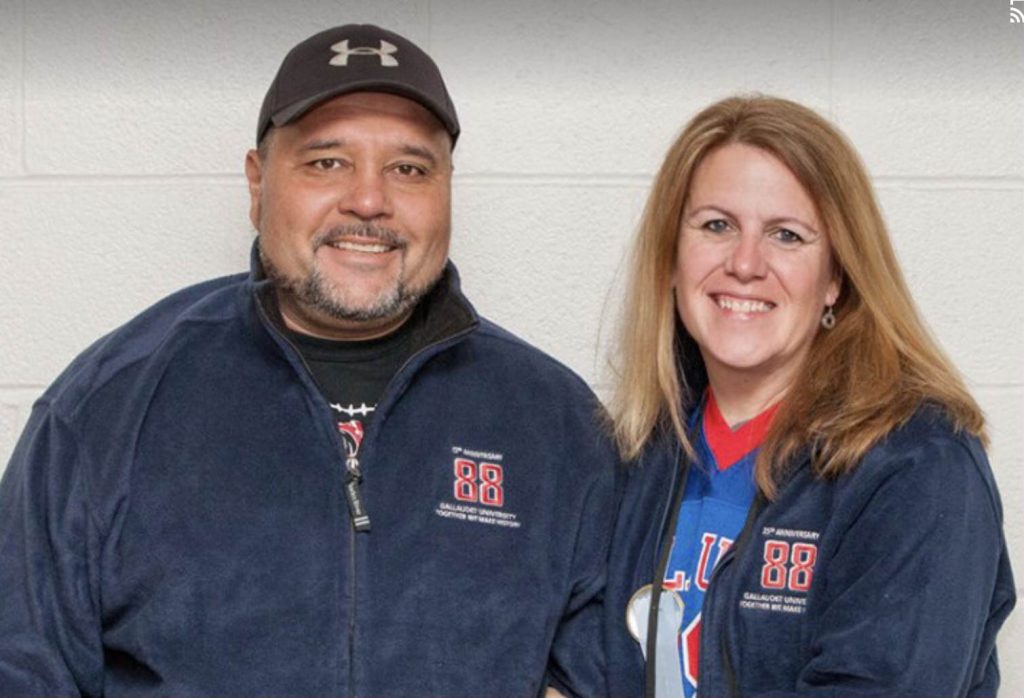
In 1996, Ginger married Ruben, who is also deaf. They met at Gallaudet. He was born in Puerto Rico and moved to Florida at age three. He now works for the State of North Carolina as an advocate for the deaf. “He has a little more hearing than Ginger, but he doesn’t use his voice either unless he’s yelling at the kids or the dog,” Jackie says. He’s a very nice guy. The first time she brought him to Milbank, he questioned Ginger about using sign language. She told him, ‘They do Smith sign language. Just get what you can.’”
“If you ask Ginger, she’ll say I don’t know sign language very well, but she and I communicate pretty well. She’s very patient with me. I don’t know ASL, though. When Ginger went to school, they mostly used signed English. Now, nearly all deaf people use ASL and that’s what Ginger teaches. It’s a lot faster. It’s more abbreviated. If I used signed English, I would sign “I’m going to the store.” In ASL, it would be “store going.” Everything’s faster. I do a lot of fingerspelling because I don’t remember a lot of the words.”
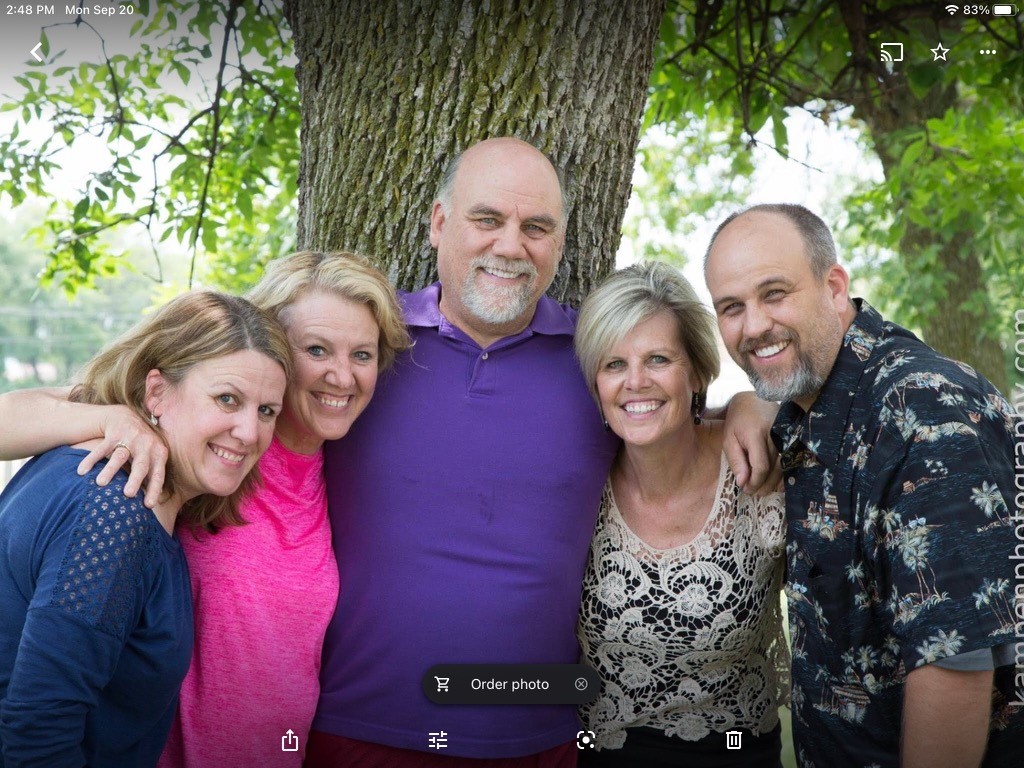
“George never learned to sign except to say. ‘I love you.’ If he wanted to talk to her, she could read his lips, but statistics suggest even a good lip reader can still only get 50 percent. If George and Ginger really needed to understand each other, they would write it down. Her siblings Kim Cousins, Pam Schmidt, and Mike all sign. Scott never learned very much because he was a lot older than Ginger, and he wasn’t patient enough to sit down. Scott now lives in Aurora, Colorado; Kim in Sundance, Wyoming; Pam in Brookings; and Mike is in Hixson, Tennessee.
“When Ginger was a kid in Milbank, there was nobody else to communicate with her. She and Gretchen Schad became friends right after we moved into the neighborhood, though. Gretchen picked up on Ginger’s signs, and she didn’t want to sit inside either. They were really good buddies” Jackie recounts. ‘But, when they were about 12 years old, Gretchen began to babysit. Ginger came home because Gretchen couldn’t play and asked, ‘Why doesn’t anybody ever ask me to babysit?’ In Ginger’s mind, she was very capable of doing everything.
Ginger was later hired as a lifeguard here in Milbank when we had the outdoor pool. Some people were upset about it, but she probably was a better lifeguard than a hearing person. She wasn’t busy talking to her friends. She stayed focused.”
“Ginger and Gretchen still managed to spend a lot of time together, though, and Schads were all very good to her,” Jackie says. “She kind of lived at their house, too. Pat Schad, Gretchen’s mom, tells about the time when she went downstairs and Gretchen and Ginger were watching TV. Pat asked Gretchen why she didn’t have the sound on the TV, and Gretchen said, ‘Ginger, can’t hear it. I don’t want to hear it’. So, that’s good friends!”
Ginger and Ruben have two sons. Nomar is 23. Robbie is 19. Both boys are hearing.
“Ginger would keep Sesame Street on the TV for the boys when they were little,” Jackie says. “So, the first time Nomar spoke to me, he sounded just like Elmo. That was how he learned to talk. Elmo’s voice was the one he always heard.
Their TV was so loud I had to show Ginger how to keep it at a certain level because it was even too loud for the kids to hear. Ginger and Ruben couldn’t tell, and the boys were so little they didn’t know anything else.
The first time they came to visit us, it was so cute to watch their chubby, little fingers as they signed. Nomar came to me and signed that he was hungry for a banana. I had to tell him, ‘Nomar, Grandma can hear.’”
Technology brought advances, especially as the boys were growing up. Many are obvious, but Ginger and Ruben have an alarm clock that vibrates under the mattress. The mattress shakes when the alarm goes off. When they had the babies, they also used an alarm system with lights that went off and on when the baby cried.
“The boys started learning sign language from the get-go, too,’ Jackie says. “By the time they were six months old, they were signing milk, mother, father. Lots of things. ASL is one of the hardest languages for deaf people to master, though. Robbie was probably better at it because he learned from his older brother.
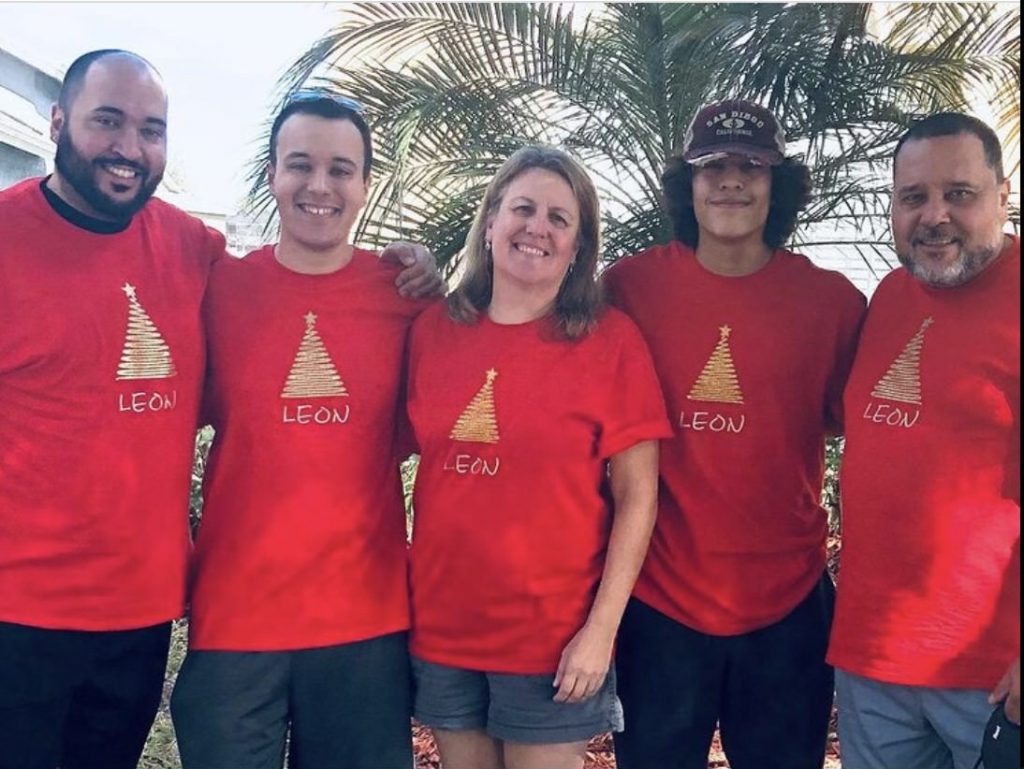
Robbie and Nomar are called CODA – Children of Deaf Adults – like in the movie that just won the Best Picture Award at the 2022 Oscars,” Jackie explains. “They went to CODA camps when they were young, and as they got older served as counselors there. It’s a good chance for hearing children who have deaf parents to relate and talk with other kids. The movie is about deaf parents that have a deaf son but also have a hearing daughter.
Actress Marlee Matlin, who is deaf, is the mother in the movie. She only agreed to take the role if they would hire deaf actors as her husband and her brother. Matlin asked them, ‘Why would you hire hearing people when there are deaf actors that can do the same job?’”
Jackie says, “Ginger and Ruben went to a Broadway show that was all in sign language. They actually met Marlee Matlin, and they also met the guy (Troy Kotsur, who won the 2022 Oscar for best supporting actor) who plays the son in CODA.”
The movie portrays some of the millions of challenges that deaf parents and hearing children face that other families will never encounter. Jackie says, “I remember when Ginger’s family lived in Minneapolis when the boys were six and eight and the boys accidentally left the water on in the bathroom. Ginger, of course, didn’t hear it. The water ran over and kept running down into their basement. Ginger called us at about midnight on the TTY. ‘Daddy, I don’t know what to do. There’s water running in the basement. The boys forgot to turn the faucet off.’ It was way too hard to explain what to do, so George just got in the car and drove there.”
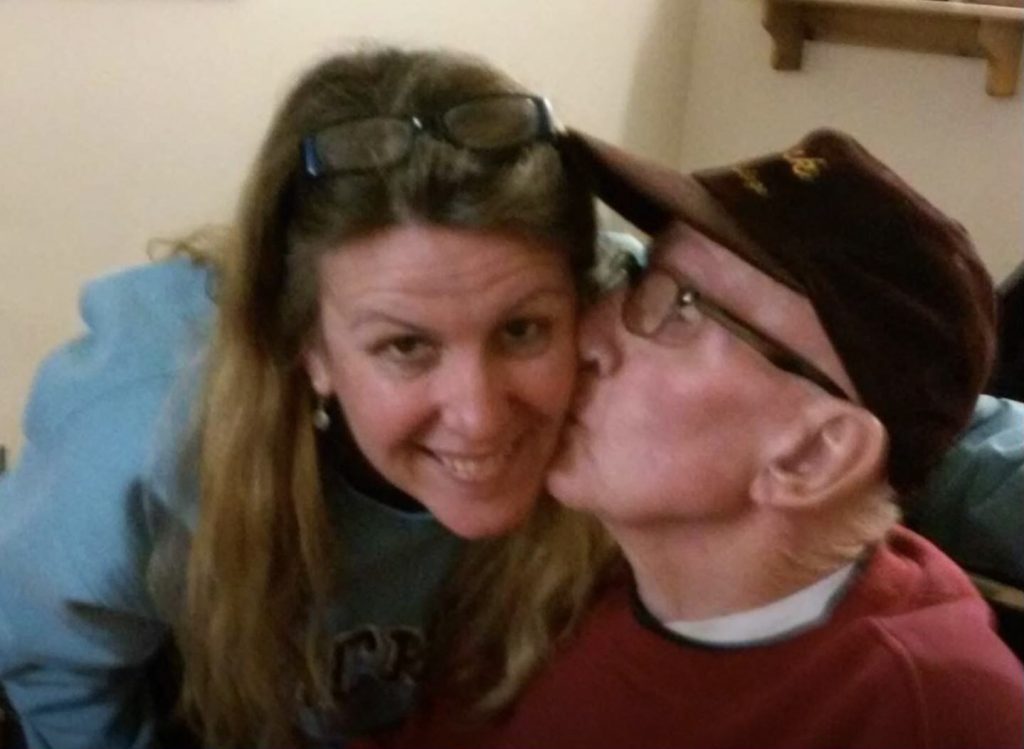
“Other things can be difficult to explain, too, especially anything relating to sound. We went on a camping trip with Ginger before she got married. We drove from Boston and camped in a tent in the mountains. We also went to Prince Edward Island. I remember we walked by the ocean, and Ginger asked, ‘Is that really noisy?’ I told her the ocean was very noisy with the waves coming in. She replied, ‘I always wondered.’ Later that day, I was boiling some eggs, and she said, ‘That must be so loud.’ I told her it wasn’t. She looked confused and said, ‘But it looks like the ocean with lots of motion going on.’”
So, it’s often difficult – sometimes impossible – to explain sound to a deaf person.” Explaining that your parents are deaf, though — not so hard. Ginger’s son Robbie has a girlfriend. One day, Ginger said to him, ‘Have you told her your parents are deaf?’ Robbie incredulously replied, ‘Why does she need to know that? It doesn’t make any difference.’ The author Victor Hugo agreed. He said, “The one true deafness, the incurable deafness, is that of the mind.”
Photos: top- Ginger and Jackie #2 Ginger about 3 years old-right after they moved to Milbank #3 -Ginger Prep II Kindergarten #4 Ginger in front of the School for The Deaf #5 Ruben and Ginger #6 Siblings-Ginger, Kim, Scott, Pam and Mike #7 Ginger and Ruben’s family #8 Ginger and her dad, George











No comments so far.
Be first to leave comment below.